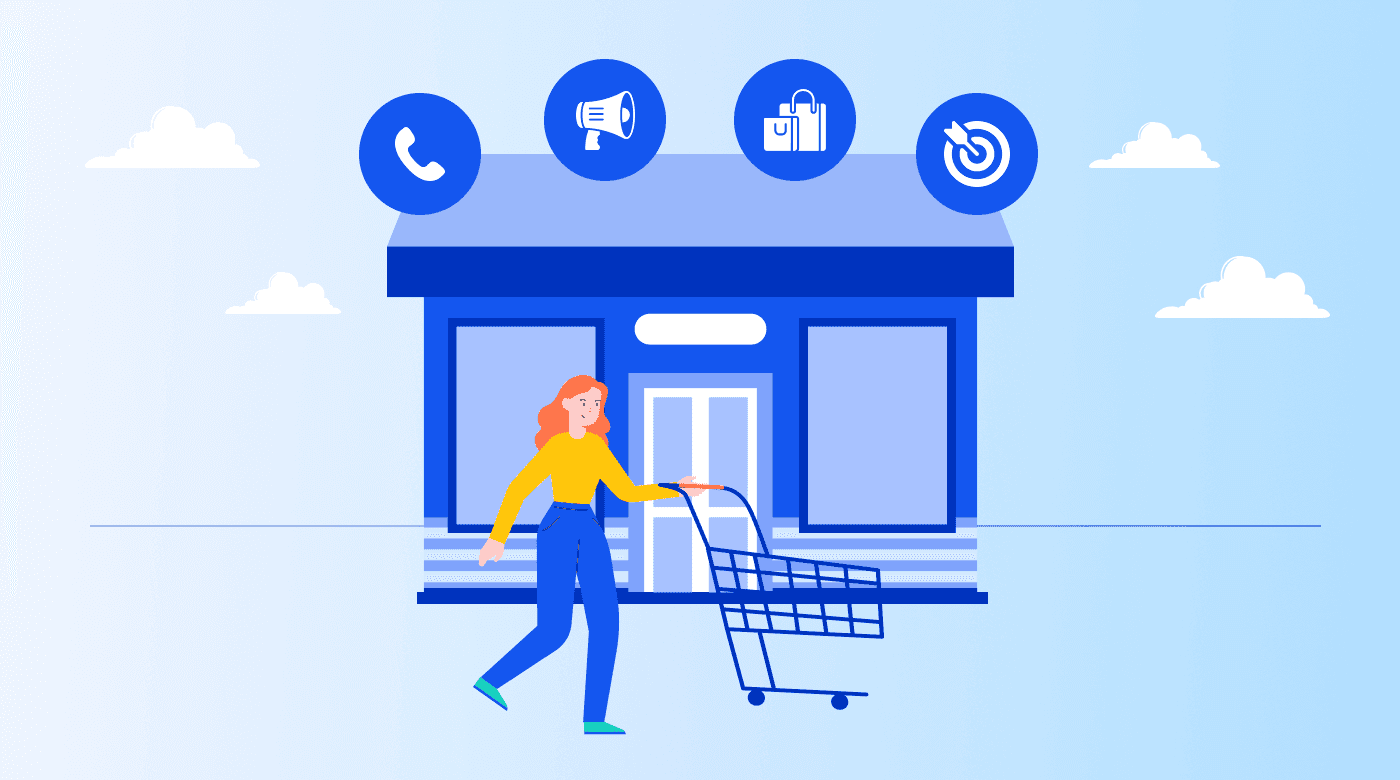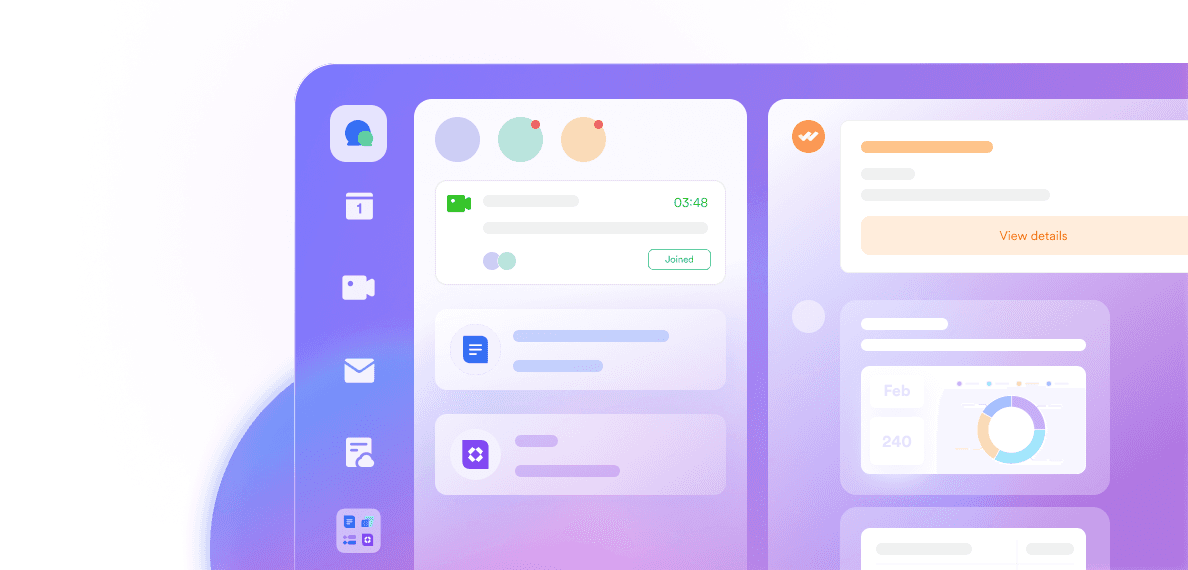Your retail business thrives when consumer demand is high and competition is manageable.
But what happens when market conditions change, and sales start to plateau?
Effective retail marketing strategies can be the lifeline that sustains and grows your business, even during challenging times. In this article, we dive into the most effective retail marketing strategies and best practices that can help you enhance your marketing campaigns, retain customers, and boost your sales in 2024 and beyond.
What is retail marketing?
Retail marketing focuses on promoting and selling products directly to consumers in a physical or online store. Unlike other types of marketing, which might target businesses (B2B) or promote products through indirect channels, retail marketing is direct and customer-focused, aiming to boost sales by enhancing the shopping experience.
The aim of retail marketing is to attract customers to a store, encourage them to browse, and motivate them to make a purchase. This involves a mix of strategies, including advertising, in-store promotions, product displays, and customer service.
For example, a clothing store might use window displays to showcase the latest fashion trends, offer discounts to pull customers in, and train staff to provide shoppers with good customer care.
On the other hand, B2B and other forms of marketing focus on building relationships with other businesses. For example, a company selling office supplies might market its products to other businesses through trade shows, direct sales, or online platforms. These efforts are aimed at convincing businesses to purchase in bulk for their operational needs.
Retail marketing mix: Understanding the 6 Ps
The retail marketing mix is a combination of elements retailers use to develop their marketing strategies and meet their customers’ needs.
The traditional marketing mix includes 4 Ps: Product, Price, Place, and Promotion. In retail marketing, however, there are two additional — and important — Ps: People and Presentation.
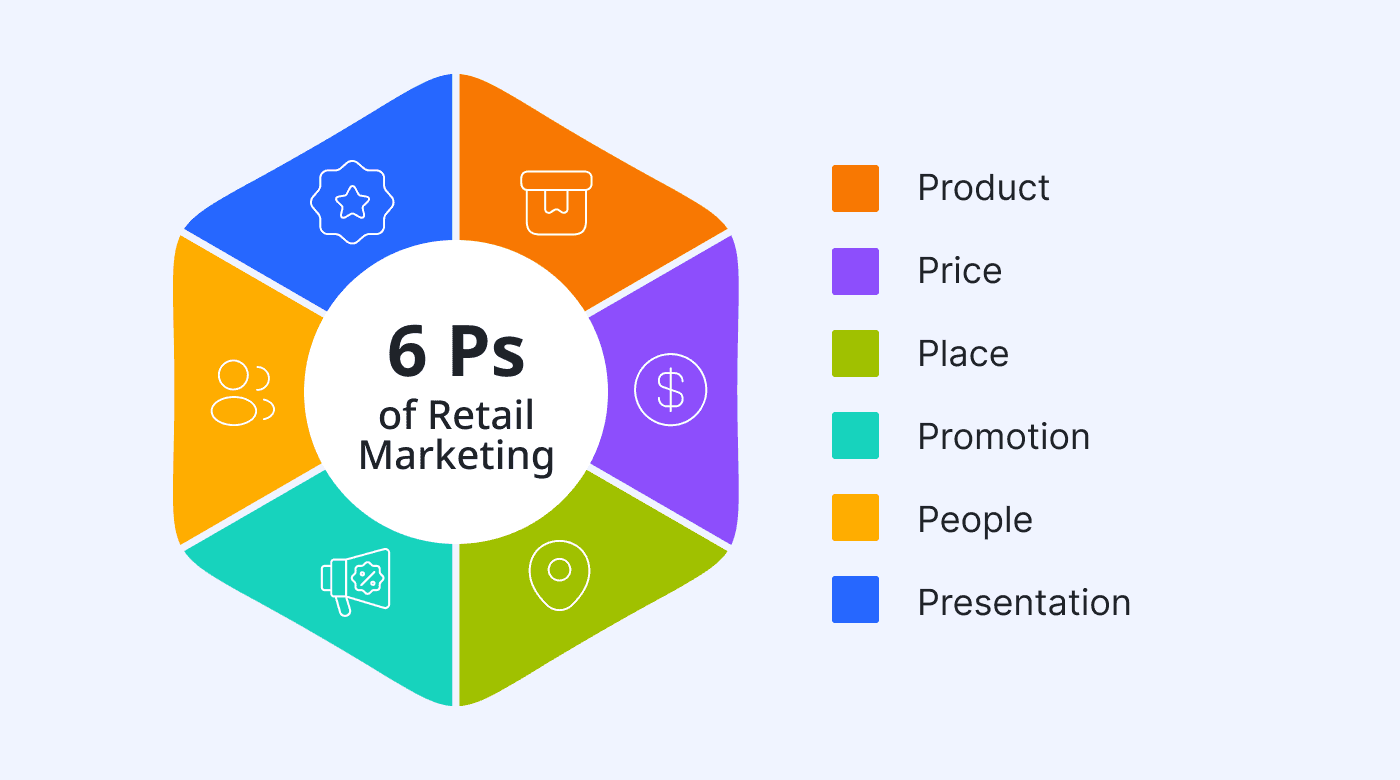
Here’s a detailed look at the 6 Ps of the retail marketing mix:
Product
“Product” is the core of the retail marketing mix and includes the retailer’s goods or services. Retailers must carefully select the range of products they offer to meet customer needs and preferences. This involves managing product variety, quality, branding, and product life cycles.
For example, a grocery store might offer organic produce, specialty items, and everyday essentials to cater to a wide customer base.
Price
“Price” is the amount of money customers pay for products. Setting the right prices is crucial for ensuring competitiveness and profitability.
Retailers need to consider production costs, market demand, competitor pricing, and customer perceptions when determining their pricing strategies. Things like discounts, seasonal sales, and psychological pricing (e.g., pricing an item at $9.99 instead of $10) are often used to attract customers.
Place
“Place” refers to where products are sold and how they’re distributed to customers. This can be a physical store, an online store, or a combination of the two.
For a physical store, the right location is key to attracting foot traffic. Online stores, on the other hand, need to have an easy-to-navigate website and efficient delivery systems. The places where retailers choose to sell their goods affect convenience, accessibility, and customer reach.
Promotion
“Promotion” encompasses all activities used to communicate with customers and persuade them to make a purchase. This includes advertising, sales promotions, public relations, and personal selling.
Effective promotion strategies create awareness, generate interest, and encourage sales. For instance, a retailer might use social media campaigns, email marketing, and in-store events to promote their products.
People
“People” in retail marketing refer to everyone involved in the selling process, including sales staff and customer service representatives.
Employees play a vital role in delivering a positive shopping experience and building customer relationships. Well-trained, friendly, and knowledgeable staff can enhance customer satisfaction and foster brand loyalty.
Presentation
“Presentation” refers to the overall look and feel of the retail environment and how products are displayed. This includes the store layout, visual merchandising, and branding. An attractive and well-organized store can draw customers in and improve their shopping experience.
For example, a retailer might use eye-catching window displays, organized shelves, and appealing signage to highlight key products and create a pleasant shopping atmosphere for customers.
Why is retail marketing important for your business to thrive?
Effective marketing strategies are necessary for retail businesses to stay competitive, especially since today’s market is saturated with so many options.
Here’s why retail marketing is crucial for a business’s survival:
Attracts and retains customers
Retail marketing helps attract new customers and keep existing ones. By using targeted campaigns and personalized experiences, businesses can connect better with their audiences.
Personalized shopping experiences can be particularly effective, with retailers seeing a $20 return for every dollar spent on personalization. Tailoring marketing to individual needs can boost customer satisfaction and loyalty.
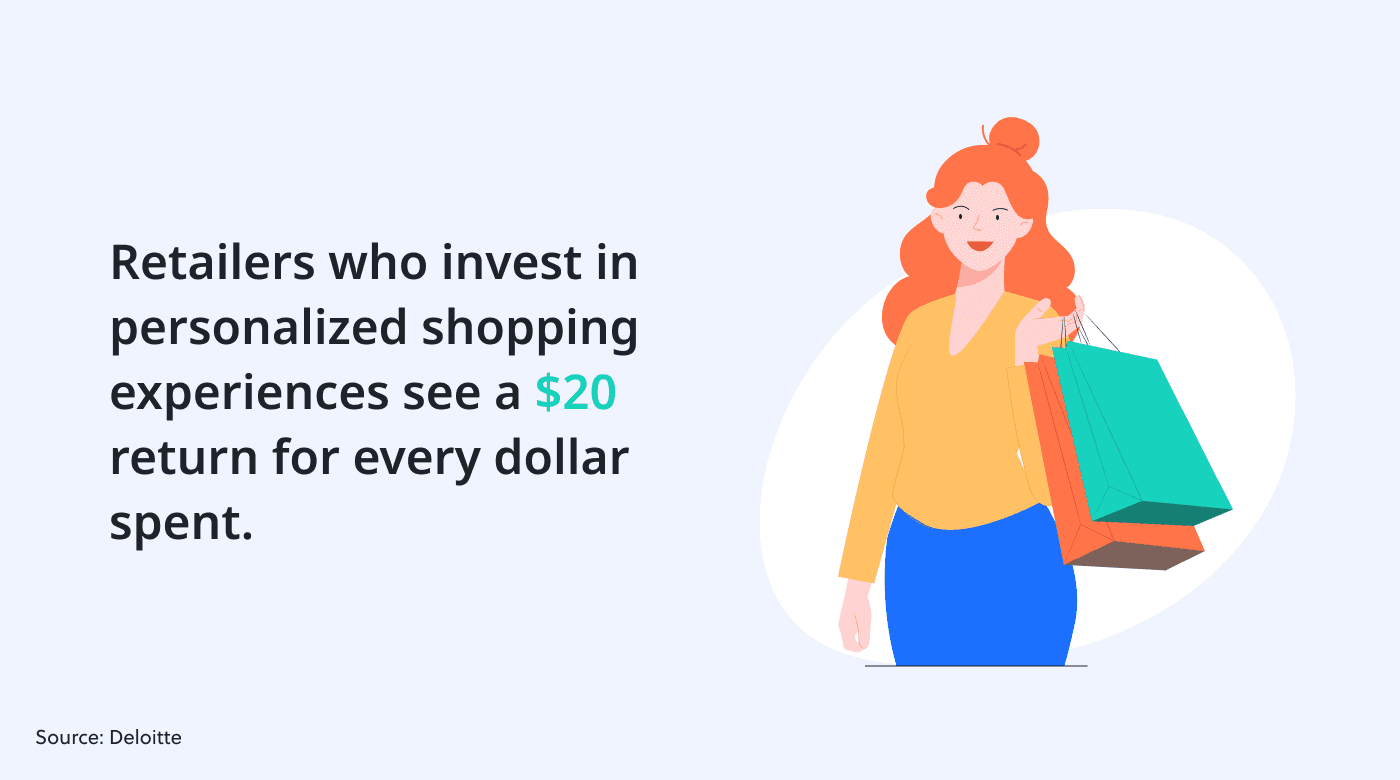
Builds brand awareness
Brand awareness is the difference between a customer choosing your store over a competitor's. Effective retail marketing helps build this awareness, making your business recognizable and memorable.
Consistent branding across social media, emails, and in-store displays keeps your brand in customers' minds. In fact, this consistency can increase revenue by up to 23%.
Drives sales
At the end of the day, retail is about making sales — and retail marketing makes that happen. Effective marketing strategies like in-store promotions, online ads, and loyalty programs can be a big factor in this.
For example, enhancing the customer experience through omnichannel strategies can increase revenue by 5–15% and improve cost efficiencies by 3–7%. These approaches create a seamless and enjoyable shopping experience, encouraging customers to shop more often and spend more when they do.
What are the different types of retail marketing?
Retail marketing involves various strategies for attracting and engaging customers. Here are the main types, along with examples of how Lark can support each one.
Digital marketing
Digital marketing uses online platforms to reach customers. This includes social media marketing, email campaigns, search engine optimization (SEO), and online advertisements.
Lark enhances digital marketing by providing a collaborative platform where marketing teams can plan campaigns, create content, and track performance. Tools like Lark Messenger and Lark Rooms facilitate real-time communication, while Lark Docs and Lark Sheets allow for seamless content creation and data analysis.
In-store marketing
In-store marketing includes point-of-sale displays, in-store promotions, and product demonstrations that enhance the shopping experience and drive sales. For instance, a grocery store might use eye-catching end-cap displays to promote seasonal products.
Lark helps retail teams stay connected and collaborate on in-store promotions. With Lark Messenger and Lark Tasks, teams can coordinate the setup of displays and manage promotional activities efficiently. Real-time updates ensure that everyone stays informed and aligned.

Experiential marketing
Experiential marketing creates memorable experiences for customers through pop-up shops, interactive installations, and events. A tech company, for example, might set up a pop-up shop where customers can try out new gadgets.
Lark supports experiential marketing by providing tools for detailed planning and execution. For instance, teams can use Lark Calendar for scheduling events and Lark Video Meetings for virtual coordination. Plus, collaborative features like Lark Docs help with organizing event details and ensuring smooth execution.
6 retail marketing strategies to draw in and keep more customers
Ready to see what retail marketing can do for you? Try these unique strategies to boost your revenue and grow your business:
Email marketing
Email marketing remains one of the most cost-effective strategies for reaching and engaging customers, with an average return on investment (ROI) of $42 for every $1 spent. By sending personalized emails based on customer behavior and preferences, businesses can significantly boost their ROI.
For example, Amazon uses email marketing to send personalized product recommendations based on browsing histories and past purchases.
Use these strategies to make the most of your email marketing campaign:
Segmentation: Divide your email list into segments based on customer behavior, demographics, or purchase histories to send more targeted messages.
Personalization: Use customer data to personalize emails, including product recommendations and special offers.
Automation: Implement automated email campaigns for welcome series, cart abandonment, and post-purchase follow-ups.
Lark can supercharge your email marketing efforts by facilitating seamless collaboration on campaign creation. With Lark Docs, for example, team members can co-edit email drafts in real time, ensuring consistency and creativity.
Plus, Lark Base can help manage and track the entire email marketing project, from brainstorming sessions to final approval, to ensure that every detail is meticulously handled.
2. In-store events
In-store events provide unique opportunities to engage customers directly and create lasting impressions.
Apple is a great example of a brand that nails their in-store events. They host workshops and product launches that draw in customers and generate buzz. For instance, their “Today at Apple” program offers free workshops where customers can learn about photography, music, coding, and more using Apple products. They also run Apple Camp, a free program that helps kids and families create digital projects together.
Successful in-store events often feature interactive workshops, exclusive previews of new products, and guest speakers. To ensure these events run smoothly, it’s essential to promote them through social media, email marketing, and in-store signage.
Lark Events is a great event management tool, from inviting guests and managing RSVPs to coordinating event logistics. And Lark Calendar helps schedule events and keep all team members informed and aligned.
Check out all of Lark’s event-planning templates.
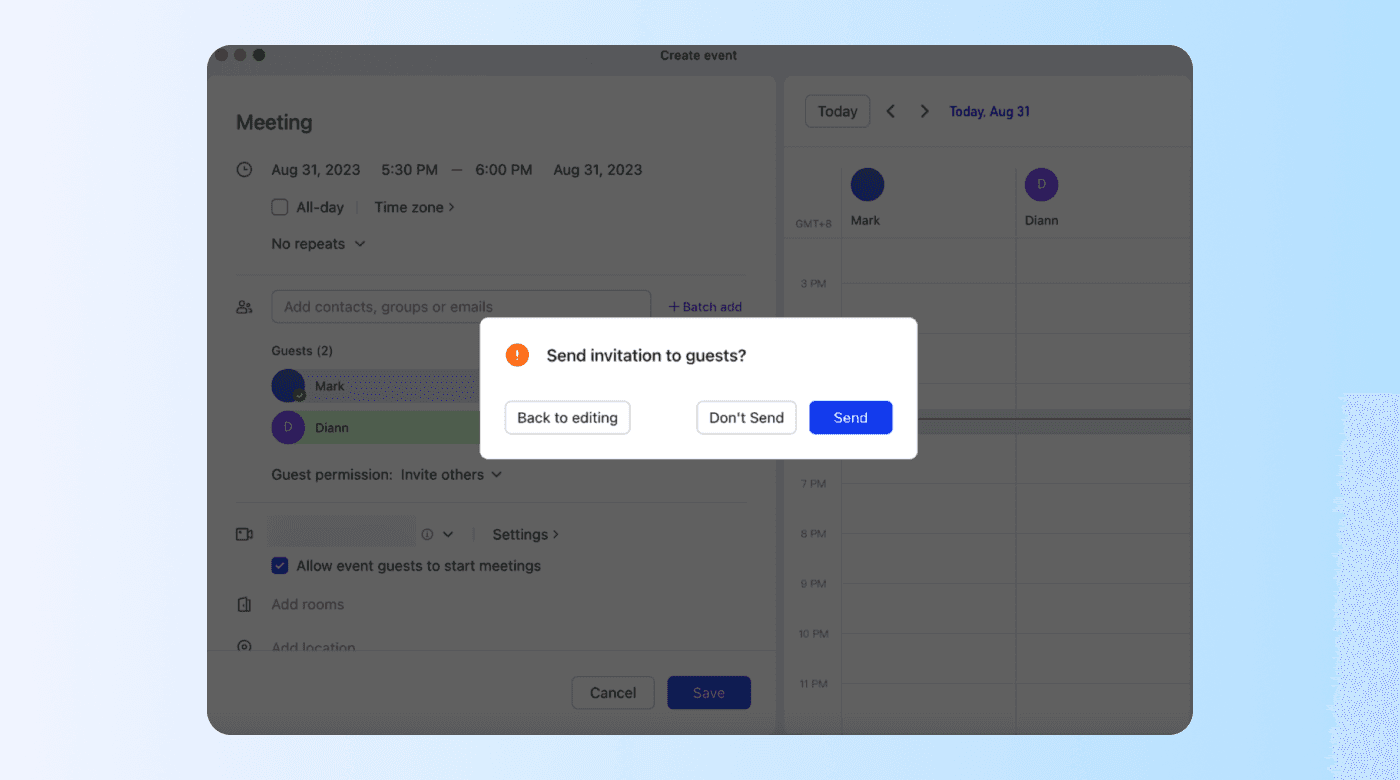
3. In-store displays
Eye-catching in-store displays — to promote seasonal displays, for example — can hugely influence customer purchasing decisions. They should be strategically placed in high-traffic areas, have bold signage, and incorporate interactive elements like touch screens or product samples.
Lark’s task management features help teams coordinate the setup and maintenance of in-store displays. Using Lark Tasks, you can assign responsibilities and track progress, ensuring displays are set up correctly and on time and enhancing the overall shopping experience.
4. Social media marketing
Social media platforms are indispensable for building brand awareness and engaging with customers. After all, 55% of consumers discover new brands on social media, and 78% are willing to buy from a company after having a positive social media experience.
To leverage social media marketing effectively, your business should maintain a consistent posting schedule, encourage user-generated content, and run targeted ads.
Lark offers Social Media Calendar and Social Media Content Calendar templates to help plan and organize posts, while Lark Docs allows teams to draft, review, and schedule posts. Together, your marketing team can create and implement a cohesive social media marketing strategy that resonates with your audience.
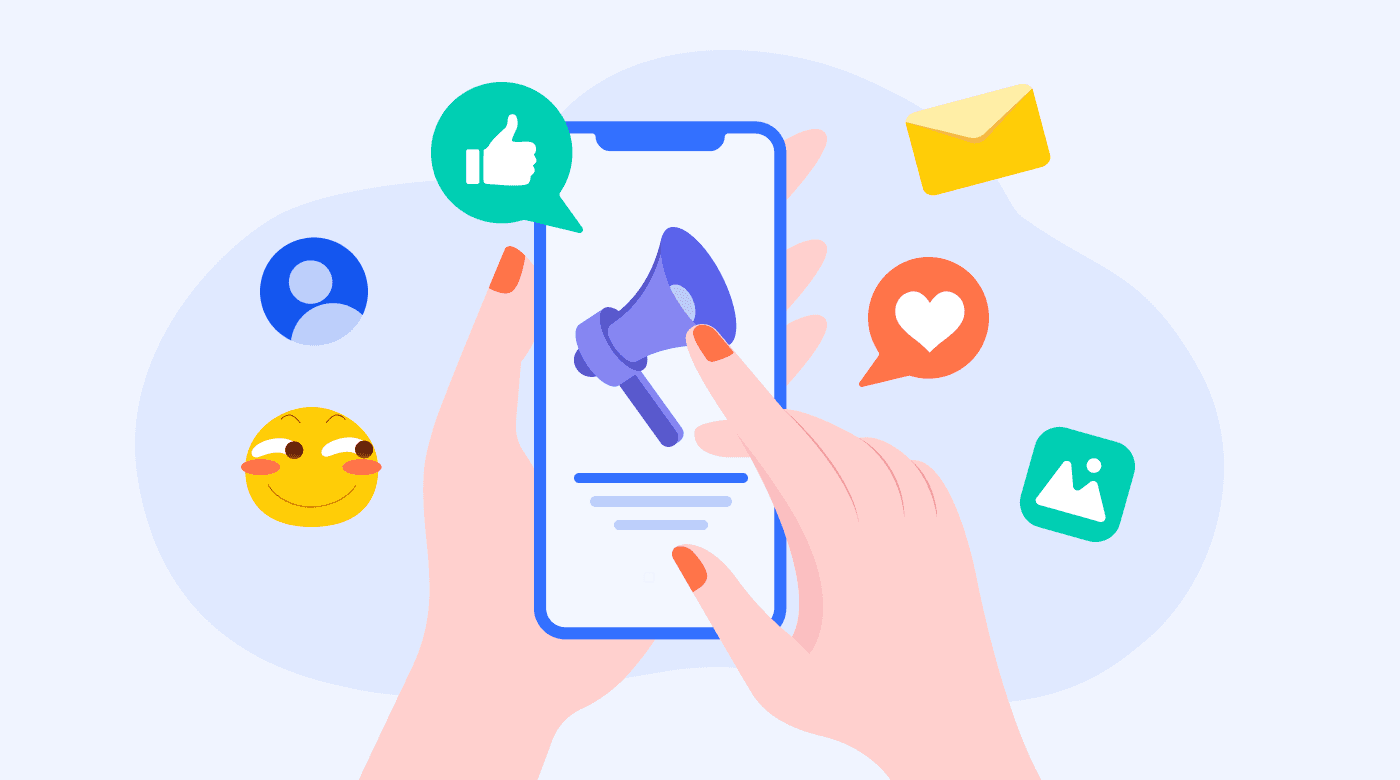
5. Loyalty programs
Loyalty programs incentivize repeat purchases and foster long-term customer relationships. Program members typically generate 12-18% more revenue per year than non-members.
Sephora’s Beauty Insider program is a prime example, offering points for purchases that customers can redeem for rewards, along with tiered benefits based on annual spending.
To create an effective loyalty program, businesses should implement a points-based system, offer tiered rewards, and provide exclusive discounts and early access to new products.
Use Lark Docs to outline program details and Lark Sheets to track member activity to ensure your program is effective and running smoothly.
6. Content marketing
Content marketing involves creating valuable, relevant content, including blog posts, videos, and infographics, to attract and engage your target audience.
For example, IKEA’s YouTube channel and blog offer home décor tips and DIY projects that engage customers and promote their products.
Use these strategies to maximize your content marketing efforts:
Create high-quality content: Focus on producing content that provides value to your audience. Lark’s content creation templates can streamline the process of planning, creating, and managing content. With tools like Lark Docs, teams can collaborate on content creation to maintain consistency and quality across all platforms.
Optimize for SEO: Use relevant keywords to improve your content’s visibility in search engines.
Promote your content: Share your content across multiple channels, including social media, email, and your website.
4 retail marketing best practices to get the most out of your campaigns
To maximize the effectiveness of retail marketing campaigns, consider these key practices:
Use the right technology
There are countless tools on the market with powerful features for boosting your marketing efficiency. But why juggle many when you can have one that does it all?
Retail marketing has the power to make a significant impact on your business — but only if executed thoughtfully and with the right tools.
Lark is the all-in-one digital hub you need to keep your retail marketing campaigns moving forward. Lark Suite provides a comprehensive set of tools that enable seamless communication and collaboration within marketing teams.
Let’s look at various ways your team can use Lark:
Your marketing team can use Lark to coordinate a multi-channel campaign efficiently. They can brainstorm ideas in Lark Meetings, where real-time, remote communication ensures that all team members, regardless of their respective locations, can contribute. During these meetings, ideas can flow freely, fostering creativity and innovation.
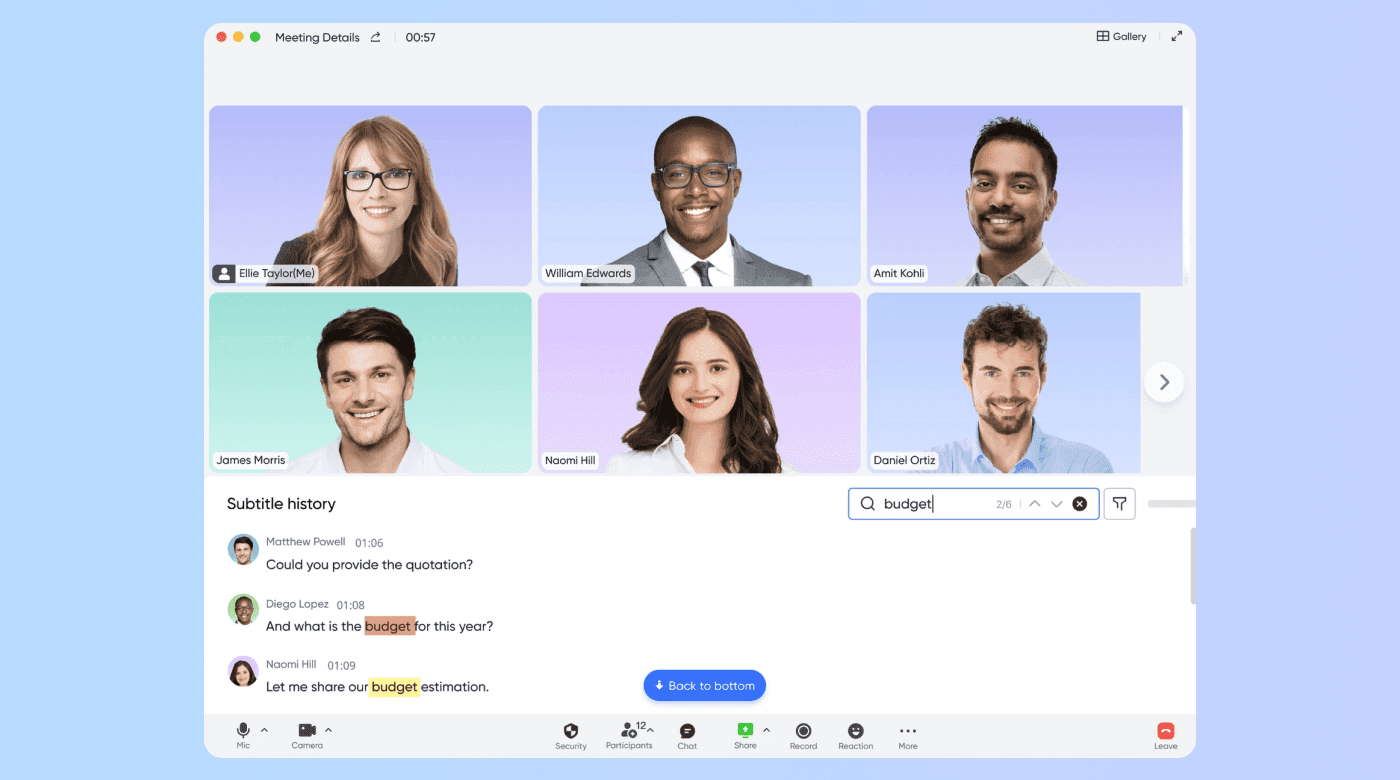
Once the brainstorming session is complete, team members can draft and refine content in Lark Docs. This tool allows for collaborative editing, ensuring that everyone can contribute their expertise to create polished, high-quality marketing materials.
As the campaign progresses, Lark Base can help manage projects and track every milestone, keeping the team on schedule and aligned with their goals.
Lark Meegle can further organize tasks and deadlines, ensuring that productivity is maintained and nothing falls through the cracks.
Know your customer base
Understanding your customer base is crucial for tailoring marketing campaigns that resonate. Use customer data to segment your audience based on demographics, purchase histories, and preferences.
Here are some techniques you can use to get to know your customers better:
Conduct surveys and focus groups: Gather qualitative insights directly from customers to familiarize yourself with their needs and preferences.
Use analytics tools: Track customer behavior and preferences using analytics platforms to gain quantitative insights.
Create detailed buyer personas: Develop buyer personas to guide your marketing efforts and ensure messages are targeted and relevant.

Maintain consistent branding
Consistent branding across all marketing channels helps build brand recognition and trust. With a cohesive brand image, your customers can easily recognize and remember your brand — which is crucial for long-term success.
Take the unmistakable Coca-Cola branding, for example. The company maintains a consistent brand image across all its platforms, from its iconic red and white logo to its uplifting messaging. This consistency helps reinforce its brand identity and build trust with its audience.
Follow these tips to help your retail business stay on-brand:
Develop brand guidelines: Create comprehensive brand guidelines that include logo usage, color schemes, fonts, and tone of voice.
Ensure consistency: Apply your brand guidelines consistently across all your marketing materials, from your social media posts to your in-store displays.
Regular reviews: Regularly review and update your brand guidelines to keep them relevant and ensure they reflect any changes in your brand strategy.
Use data to make decisions
Data analytics is the secret weapon in making informed marketing decisions and measuring your campaign’s success. By diving deep into data, you can uncover trends, decode customer behaviors, and fine-tune your marketing strategies for optimal results.

Turn your data into actionable insights with these tips:
Track key performance indicators (KPIs): Use analytics tools to monitor vital metrics like conversion rates, customer acquisition costs, and ROI. This provides a clear picture of what's working and what needs improvement.
Conduct A/B testing: Experiment with different marketing tactics to see which ones hit the mark. For instance, test two versions of an email subject line to determine which one gets more opens.
How Lark can aid in retail marketing and beyond
Retail marketing has the power to significantly impact your business — but only if executed thoughtfully and with the right tools.
Lark is your all-in-one digital hub to keep your retail marketing campaigns on track and moving forward.
From collaborative content creation with Lark Docs to project management with Lark Base, it offers everything you need to optimize your marketing efforts. As a result, you can maintain consistent branding, make data-driven decisions, and execute efficient campaigns.
For more insights into optimizing your retail marketing strategies, sign up for a Lark demo.
Table of Contents


